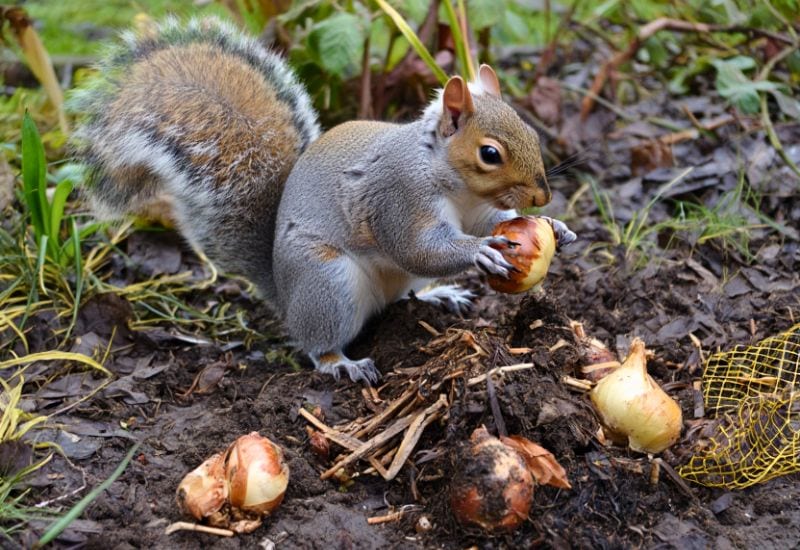
Tell me if this sounds familiar: you spend an afternoon planting bulbs, the kind of day that makes you feel quietly accomplished — soil under your nails, plans in your head, spring already taking shape in your mind.
Then morning comes. And with it — holes. Everywhere.
Bulbs gone. Soil scattered. A few papery skins tossed about like confetti at a party you weren’t invited to. And there, perched on the fence, a squirrel surveys your handiwork with the kind of smugness only a creature that’s outsmarted you can manage.
We’ve all been there. It’s the gardener’s version of heartbreak — a mix of disbelief, annoyance, and reluctant admiration.
Because really, squirrels aren’t villains; they’re just professional foragers with terrible boundaries. They’re curious, clever, and endlessly busy. They dig not out of spite, but instinct — though that doesn’t make it any less infuriating when your future tulips become part of their pantry plan.
The secret isn’t to fight them — it’s to outsmart them. With a few small changes — better timing, smart deterrents, and a mix of unappealing companions — you can turn your garden from snack zone to off-limits. It’s not about going to war with nature, but learning to convince your squirrel neighbors to look elsewhere for snacks.
So if you’re tired of finding your carefully planted bulbs turned into a squirrel’s treasure hunt, here are six clever ways to keep them safe — and make sure your spring display belongs entirely to you.
Why Squirrels Love Fall Bulbs
If you’ve ever planted a batch of fall bulbs and found neat little craters the next morning, you’ve met your garden’s most determined foragers. Squirrels don’t dig up bulbs out of spite — they do it because they’re wired to.
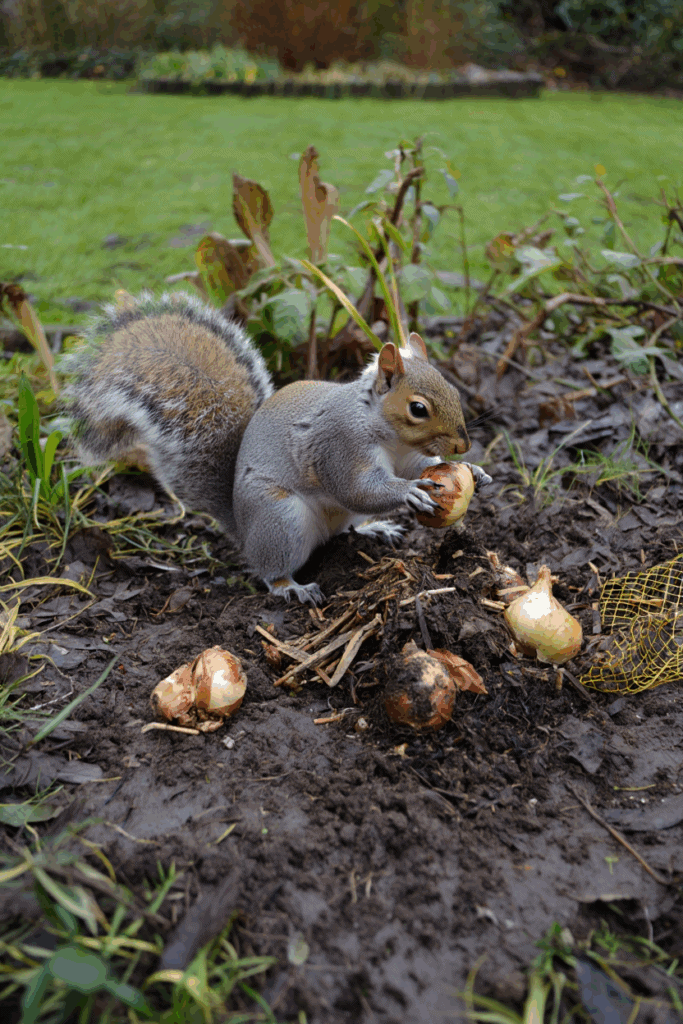
As natural hoarders, squirrels spend autumn burying anything rich in starch or protein — nuts, seeds, and, unfortunately, your freshly planted bulbs. Those fleshy little storage organs are like underground energy bars, perfect for fueling a long winter. When you loosen the soil and plant bulbs, it feels to a squirrel like you’ve just pre-dug a convenient buffet.
The timing couldn’t be better for them either. Fall is their busiest season for caching food, and disturbed soil gives away exactly where the good stuff is buried. Then, when the ground begins to thaw in early spring, the scent of sprouting bulbs rises and tempts them to dig again.
Some bulbs are more appealing than others. Tulips and crocus top the menu, while daffodils, alliums, snowdrops, and hyacinths contain bitter or mildly toxic compounds that most squirrels wisely avoid.
Honestly, squirrels are just doing what comes naturally—being curious, looking for treats, and sometimes causing a little chaos for gardeners like us. But hey, that’s part of the fun, right? Outsmarting them, one clever trick at a time, keeps things interesting every fall.
1. Delay Your Bulb Planting Time to Outsmart Active Squirrels
One of the easiest ways to outsmart squirrels is simply to plant later than they expect. Most gardeners plat bulbs into the ground as soon as the weather cools, but that’s also peak squirrel season — when they’re frantically digging and burying food for winter. To a squirrel, your freshly planted bed looks like a treasure map.

The trick? Wait them out. By late October or early November, their frenzy slows down, and the ground is cooler — perfect for planting. Hardy bulbs like alliums, fritillarias, and crocosmia can handle a slightly delayed schedule, and tulips actually thrive when planted later. Cool soil reduces the risk of fungal diseases like tulip fire and keeps your bulbs safe from early nibblers.
Worried about waiting too long? No problem. You can store bulbs in a paper bag in your refrigerator (away from fruit) for a few weeks to mimic the chill they’d naturally get outdoors. When the squirrels have settled down and the soil feels cold to the touch, it’s go time.
A little patience now means you’ll have undisturbed bulbs — and a spring display that’s entirely yours.
2. Plant Bulbs Deeper So They Stay Safely Out of Reach
Most squirrels are surface foragers. They’ll happily scratch through a few inches of soft soil but rarely dig deeper than that — it burns too much energy for an uncertain reward. By planting bulbs 6 to 8 inches deep, you move them well beyond the average digging range.

This extra depth offers more than just protection from squirrels. It stabilizes bulbs against frost heave, keeps soil temperatures consistent, and encourages stronger root systems that anchor plants better through winter.
A long-handled bulb planter is the easiest way to achieve uniform depth without overworking your wrists or back. It also helps you replant quickly and neatly — leaving less disturbed soil on the surface, which makes the area less noticeable to curious wildlife.
3. Protect Newly Planted Bulbs With Natural Prickly Materials
If squirrels treat your pots like a personal buffet, it’s time to make the surface a little less inviting. A layer of something sharp or spiky can stop them in their tracks — no chemicals, no gadgets required.
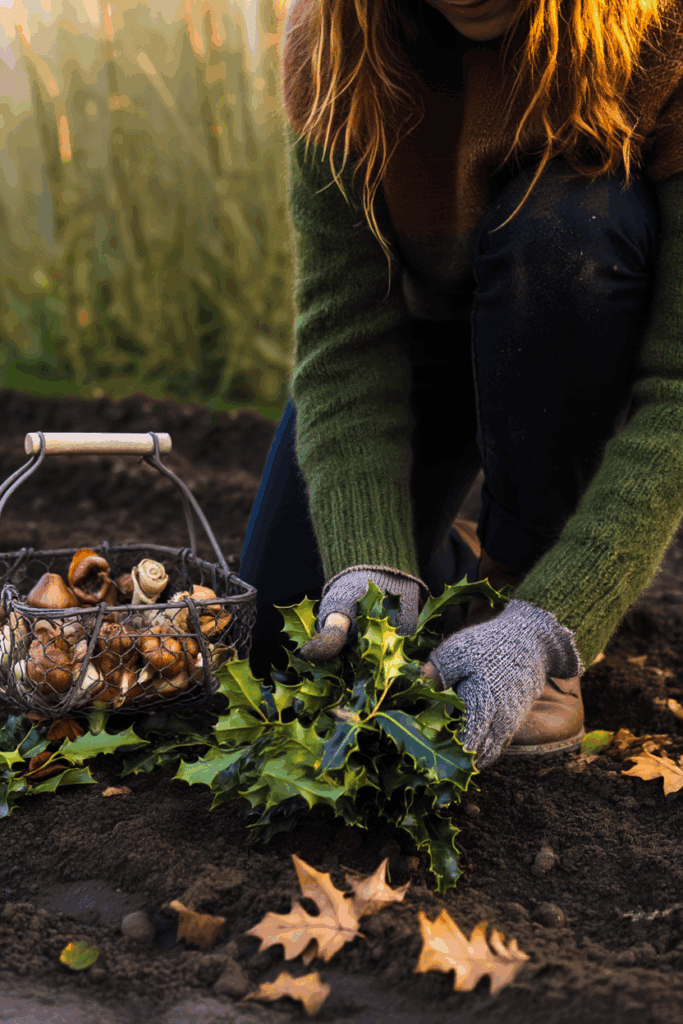
Holly leaves work beautifully. Their glossy, prickled edges form a natural barrier that squirrels won’t push through. Press the sprigs firmly into the soil so they can’t be lifted or tossed aside, and keep them there until your bulbs are well above the surface. By the time shoots are tall enough to flower, the danger has passed.
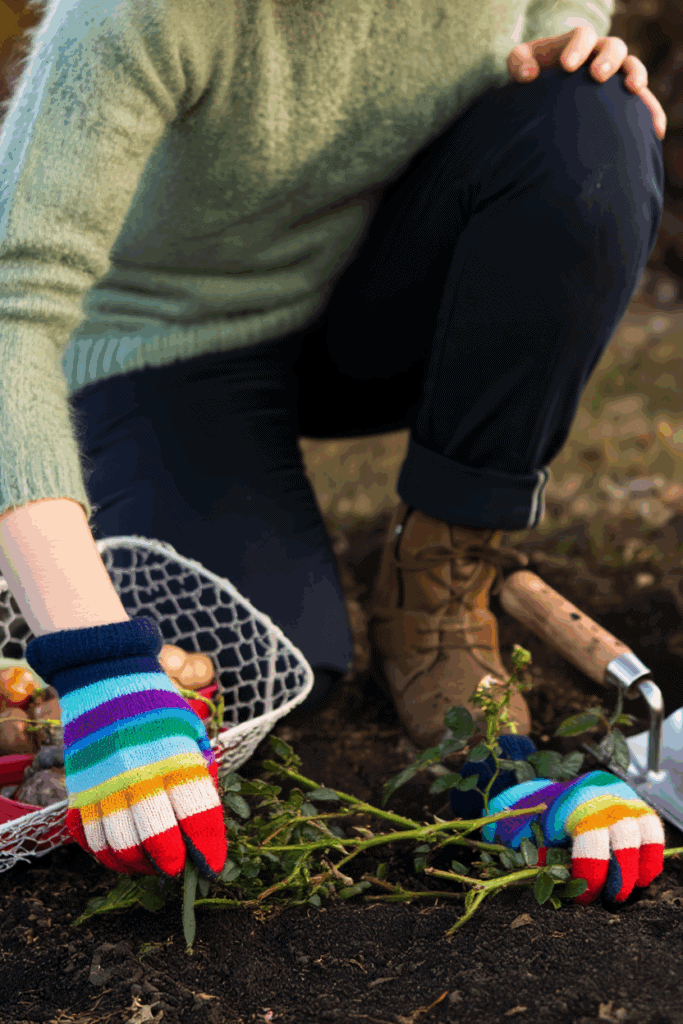
Rose prunings are another clever option. After your winter tidy-up, scatter long thorny stems across bulb beds or pots. They tangle together just enough to discourage digging but still let rain and light through. Both holly and rose stems will gradually break down, returning to the soil — a temporary shield that quietly does its job all winter long.
4. Use Natural Deterrents to Make Digging Unpleasant for Squirrels
If you’ve ever found freshly planted bulbs mysteriously unearthed overnight, you know how persistent squirrels can be. But with a few easy tricks, you can make your garden a lot less tempting to them — no chemicals, no traps, just good old-fashioned gardening know-how.
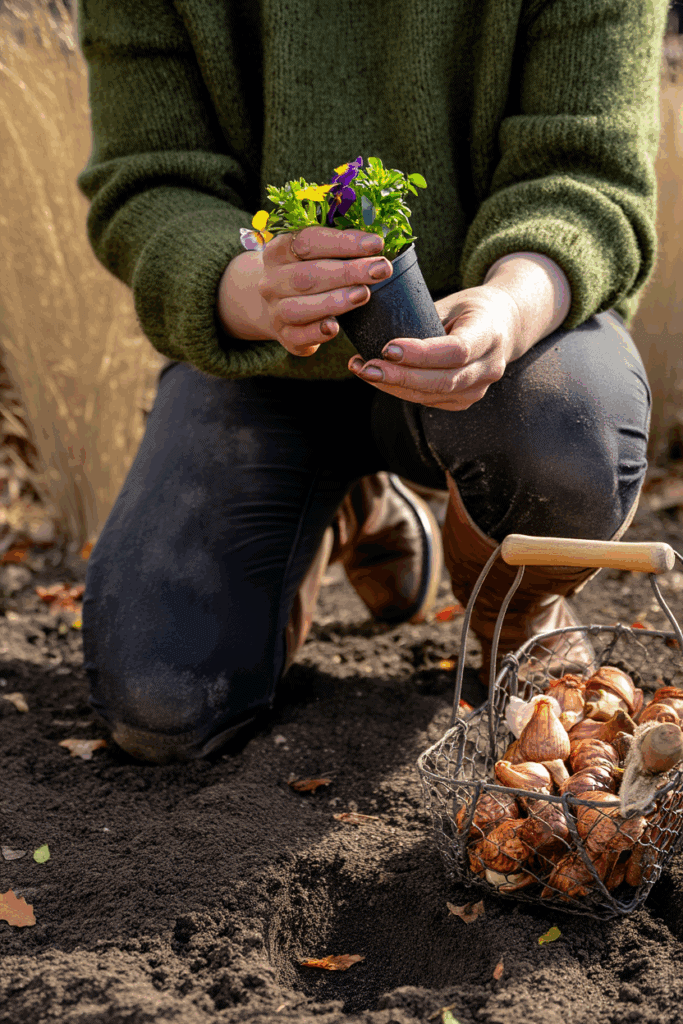
Start with scent. Squirrels rely on their noses to find buried bulbs, so anything that masks or confuses that scent gives you the upper hand. Try mixing black pepper and garlic powder, then lightly scatter it over the soil once you’ve finished planting.
It’s simple, inexpensive, and surprisingly effective. I also like to underplant with violas or pansies. Their roots help hold the soil firm, and their little leaves disguise any signs of digging that might otherwise draw attention.
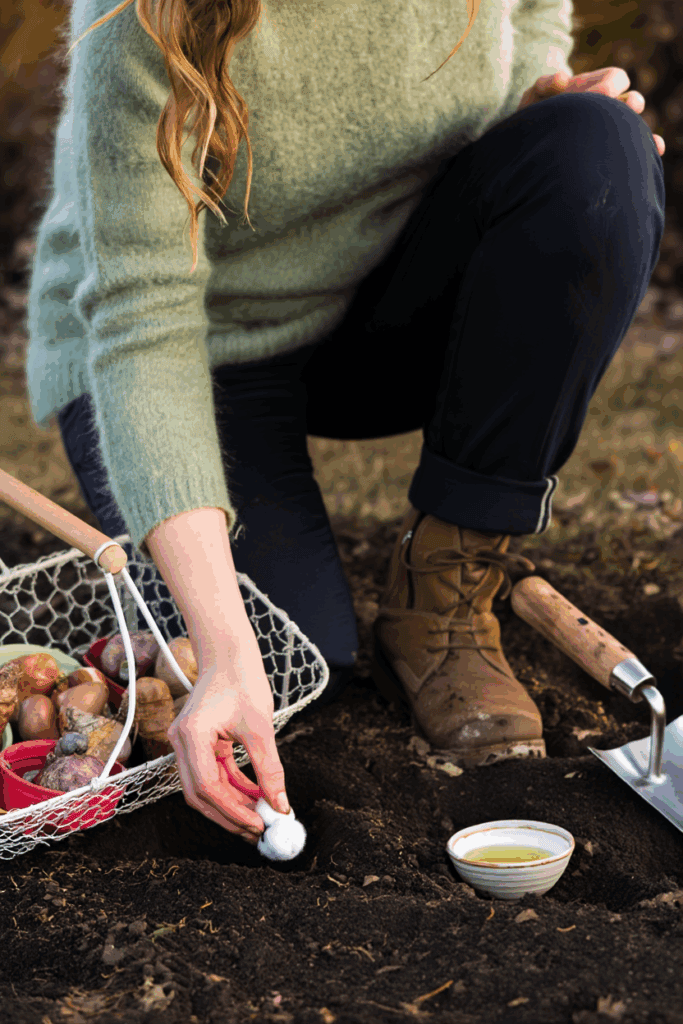
Peppermint works beautifully, too. You can plant mint nearby or place a few cotton balls soaked in peppermint oil around the bed. The crisp scent smells fresh to us but drives squirrels away fast.
If you’re dealing with a particularly stubborn bunch, a light dusting of chili or cayenne powder usually convinces them to look elsewhere. Some gardeners even roll bulbs in a small amount before planting, then sprinkle a bit more on top as the shoots start to appear.
5. Create Barriers That Make the Soil Difficult to Disturb
When scent and spice aren’t enough, it’s time to put a little distance between your bulbs and hungry paws. A simple barrier can make all the difference — and you don’t need fancy equipment to do it.
For pots, a layer of coarse gravel or small decorative stones on top of the soil often does the trick. It gives containers a finished look and makes scratching and digging much less appealing to squirrels.
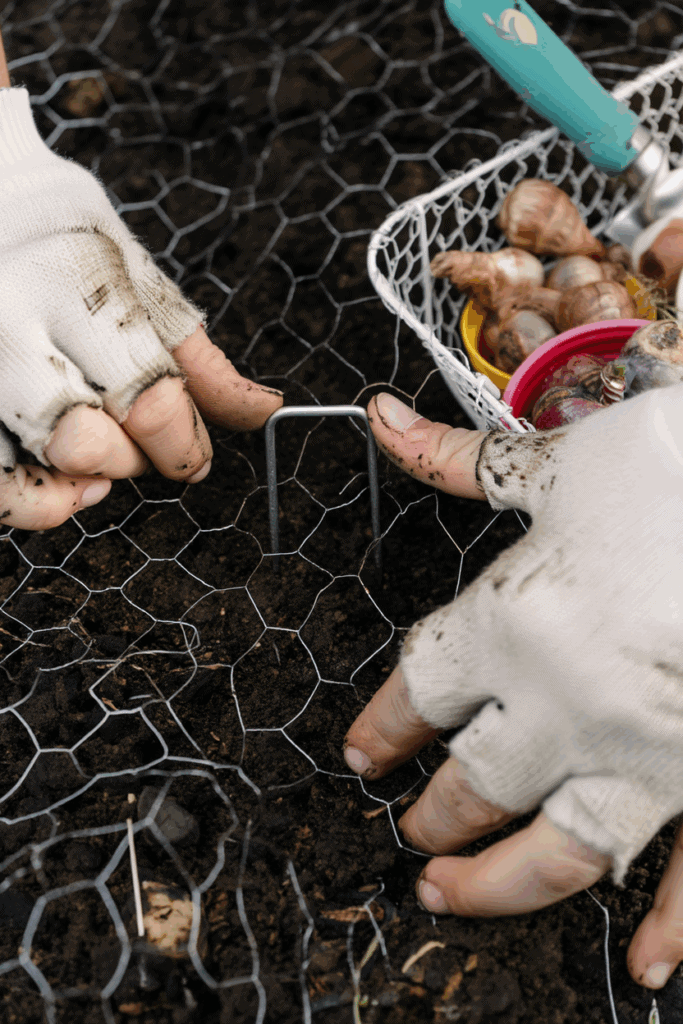
In garden beds, chicken wire or hardware cloth is a time-tested favorite. Lay a piece flat over the planting area after you’ve finished tucking in your bulbs, then secure it with landscape pins or small stones. A light layer of mulch hides the wire and keeps everything tidy. The bulbs will sprout right through the holes in spring, but squirrels won’t be able to dig them out.
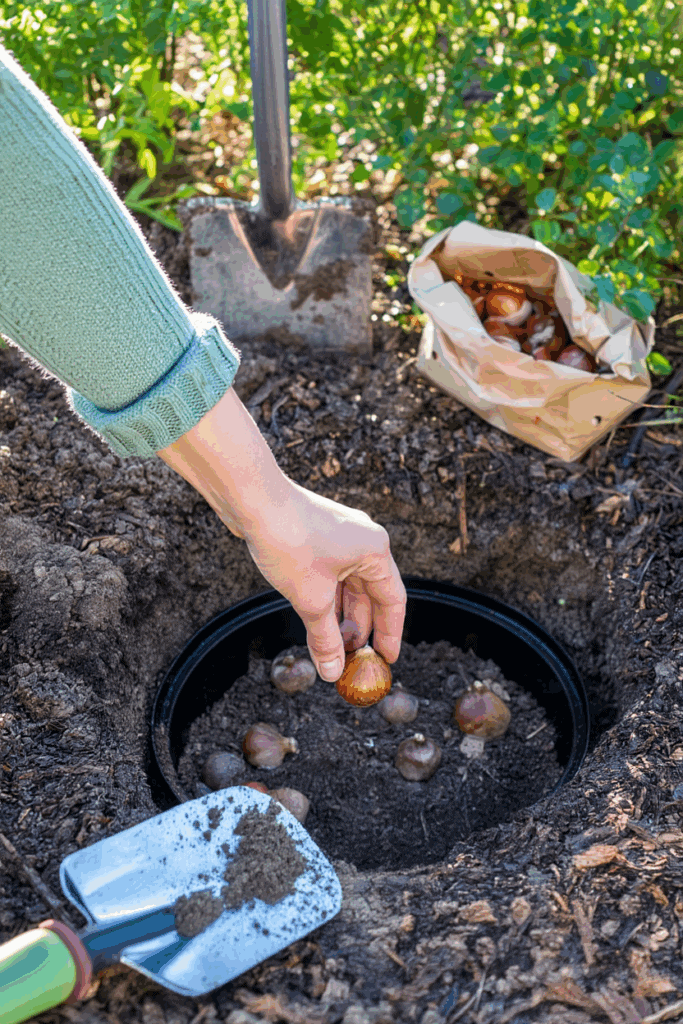
If you’re planting large numbers of bulbs, consider using wire bulb baskets or mesh cages underground. They let roots and shoots grow freely while keeping the bulbs safe from digging above.
Even a few strips of aluminum foil woven into the mulch can help — squirrels hate the feel and sound of it. It’s not elegant, but it works when nothing else does.
The goal isn’t to fence off your garden — just to make it enough of a hassle that the squirrels decide to dig somewhere else.
6: Plant Unappealing Bulbs Near Favorites to Keep Them Safe
If you can’t keep squirrels out, let your plants do the work for you. Some bulbs are naturally off-putting to wildlife, and when they’re mixed in with the ones squirrels love most, they act like a living shield. Think of it as companion planting for peace of mind.
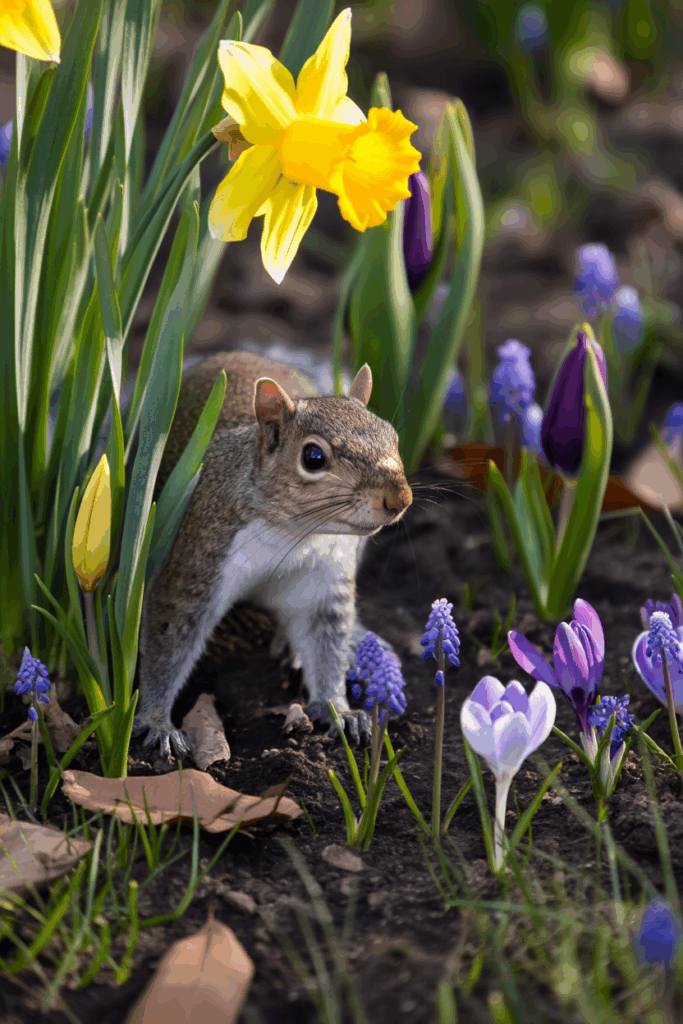
Daffodils are your first line of defense. Their bold scent and bitter sap send squirrels packing, so use them as a border or sprinkle them among tulips and crocuses. A soft drift of yellow can hide an entire patch of more tempting bulbs beneath its perfume.
Add a few crown imperials (Fritillaria imperialis) for backup. These tall, dramatic plants don’t just steal the show — their earthy, musky scent masks the smell of tulip bulbs and keeps curious noses at bay. Tuck a few in the back of the bed, and you’ll notice the digging stops almost overnight.
Then bring in alliums, the quiet protectors. Their onion-like aroma confuses squirrels and makes it harder for them to pinpoint where bulbs are buried. Mixed through the bed, they add structure, late-season color, and a layer of natural security.
Finish with early risers like snowdrops or scilla to carpet the soil and disguise freshly planted ground. When the surface looks busy and full, squirrels lose interest quickly.

Written By
Amber Noyes
Amber Noyes was born and raised in a suburban California town, San Mateo. She holds a master’s degree in horticulture from the University of California as well as a BS in Biology from the University of San Francisco. With experience working on an organic farm, water conservation research, farmers’ markets, and plant nursery, she understands what makes plants thrive and how we can better understand the connection between microclimate and plant health. When she’s not on the land, Amber loves informing people of new ideas/things related to gardening, especially organic gardening, houseplants, and growing plants in a small space.
